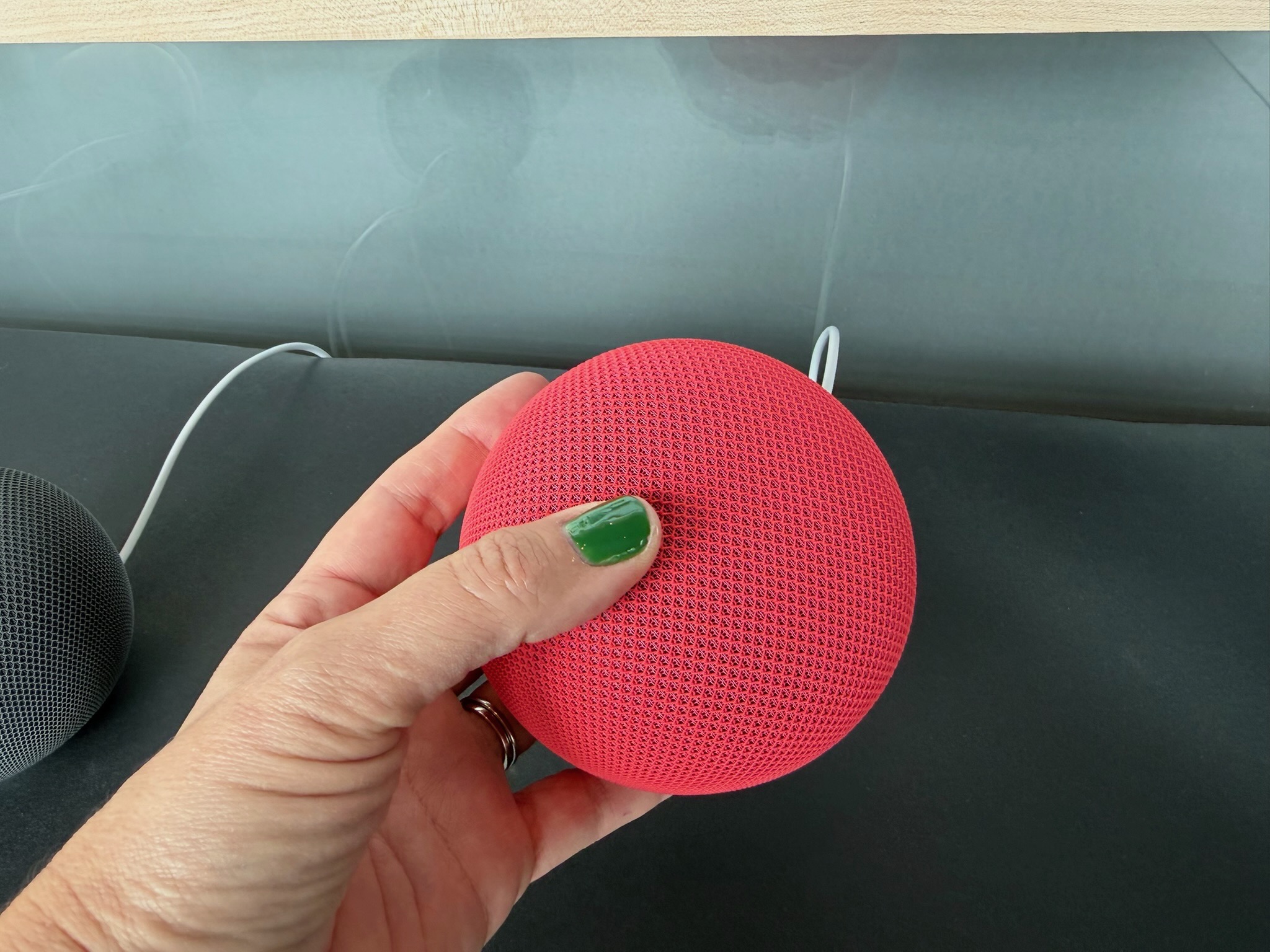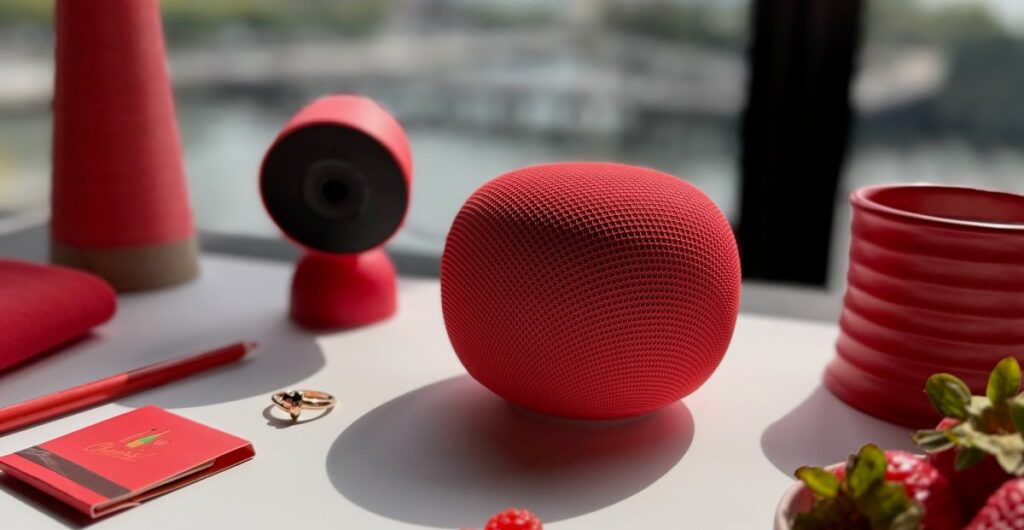Google is finally launching a new smart speaker, and it’s a complete redesign. The new Google Home Speaker features a new flattened sphere shape, new colors, a new light ring, and lots of new AI-powered features.
Announced this week, along with a major Gemini-infused update to its Google Home smart home platform, the speaker will also run the new Gemini voice assistant instead of Google Assistant. It won’t be available until spring 2026, but I got an early look in New York City last week.
Ditching the Nest moniker of its predecessors — the Nest Mini and Nest Audio — the Google Home Speaker features an entirely new design. At $99.99, it’s larger than a Mini but smaller than the Audio, around the same size as a HomePod Mini, but wider and flatter. The speaker is launching in four colors: white, gray, green, and red. I was particularly taken with the berry red color, which is bright and bold — a far cry from the muddy orange of the Nest Mini.
Featuring 360-degree audio, the speaker is catching up to competitors’ offerings from Apple and Amazon sound-wise. I heard it pumping out Aerosmith’s “I Don’t Want To Miss A Thing” with clear vocals, nice mids, and some decent bass. You can pair two for stereo sound and connect them wirelessly to a Google TV Streamer for TV surround sound — although I didn’t get to demo this.
Gemini is the primary interface for the speaker, and it has been significantly upgraded from Google Assistant.
Google says the speaker was “designed from the ground up” to support Gemini for Home, Google’s new smart home platform that puts AI front and center. It will be powered by Google’s new voice assistant, Gemini, and also support Gemini Live, a paid version that offers a more conversational AI chatbot experience. It’s also a Google Home hub, a Matter Controller, and a Thread border router, allowing it to connect and control smart home devices in Google Home.
Google Home’s Anish Kattukaran tells me the speaker features custom processing for Gemini and optimized far-field microphones. Also new is a light ring, another feature that Apple and Amazon’s smart speakers also have. Situated at the bottom of the device, the ring changes colors to indicate when Gemini is listening, thinking, or responding.

I saw several demos of the new speaker responding both as Gemini and Gemini Live. The latter requires you to say “hey Google, let’s chat,” to invoke it, whereas the former still responds to “hey Google” (and only “hey Google”). Gemini is the primary interface for the speaker, and it has been significantly upgraded from Google Assistant.
I wasn’t able to make requests myself as the speakers are voice-matched (it can work with up to six people in a home, as well as guests). I watched the tester ask what to substitute for vanilla in a cookie recipe and heard Gemini offer several usable suggestions. It was then asked to create a shopping list with ingredients for an authentic pad thai, which it proceeded to do.
I’ve written more about the capabilities of Gemini here, but my takeaway from these (very on the rails) demos is that the voice assistant appears to be more conversational, able to understand natural language, and has more access to real-time information, all of which should make it more useful. However, I won’t know for sure until I can test it myself.
I’m most excited to try out this natural language control interface with smart home devices, something I’ve enjoyed using with Alexa Plus, Amazon’s LLM-powered upgrade to its voice assistant. Kattukaran tells me that with Gemini, you don’t have to use precise nomenclature to get devices to operate, can string together multiple commands without specific names (so “make it warmer” instead of “turn the thermostat to 68 degrees”), and can use exceptions (“turn all the lights off except those in the bedroom.”)
The demos I saw with Gemini Live seemed more limited in a home context. The Live assistant doesn’t require repeating the wake words, making the back and forth more natural, but the interactions were no different from those you can have with the Gemini Live chatbot on your phone or computer; there’s nothing particular to the home here.
The tester asked Gemini to help him create a recipe using eggs, spinach, feta, and bread. It started to respond, then he interrupted it and asked it to make the dish keto. He then interrupted again, asking it to be kid-friendly. The chatbot was able to understand interruptions and easily pivot based on the new instructions.
Gemini Live can’t take any actions, so it is purely a chatbot in a speaker.
However, it couldn’t pull up a recipe on the screen of the Nest Hub Max, which they were also demoing the experience on, or even send it to your phone. Gemini Live can’t take any actions, so it is purely a chatbot in a speaker.
Kattukaran says that having access to Live in the smart speaker is “like having 1000 experts on your countertop or your bedside table or in the living room.” My counter to that is so is my smartphone. However, Google’s long-term plan is to bring everything you can do with Gemini today to Gemini Live. “That’s the world we’re building towards,” he says. That’s when things could start to get really interesting.
Photos by Jennifer Pattison Tuohy / The Verge
Read the full article here
